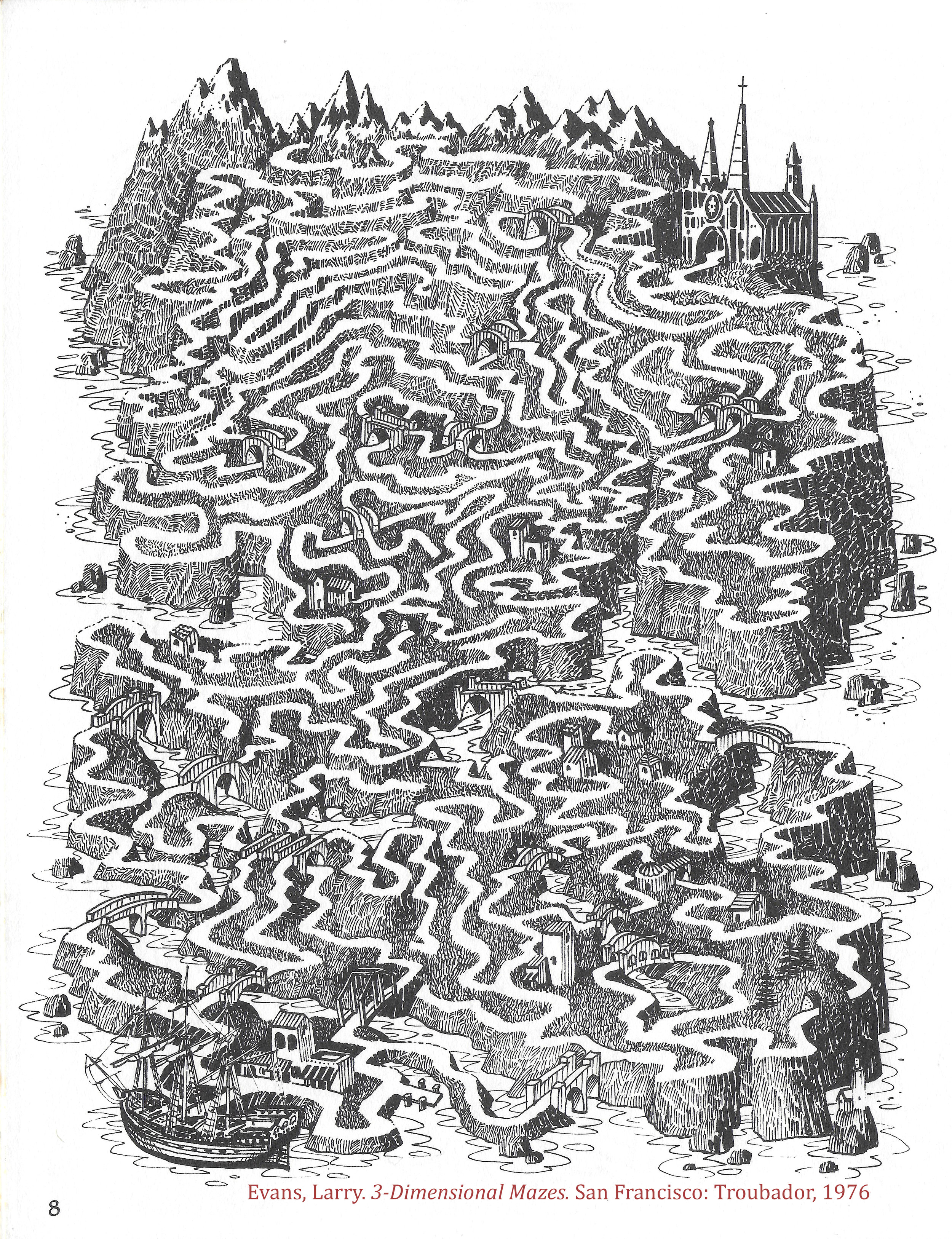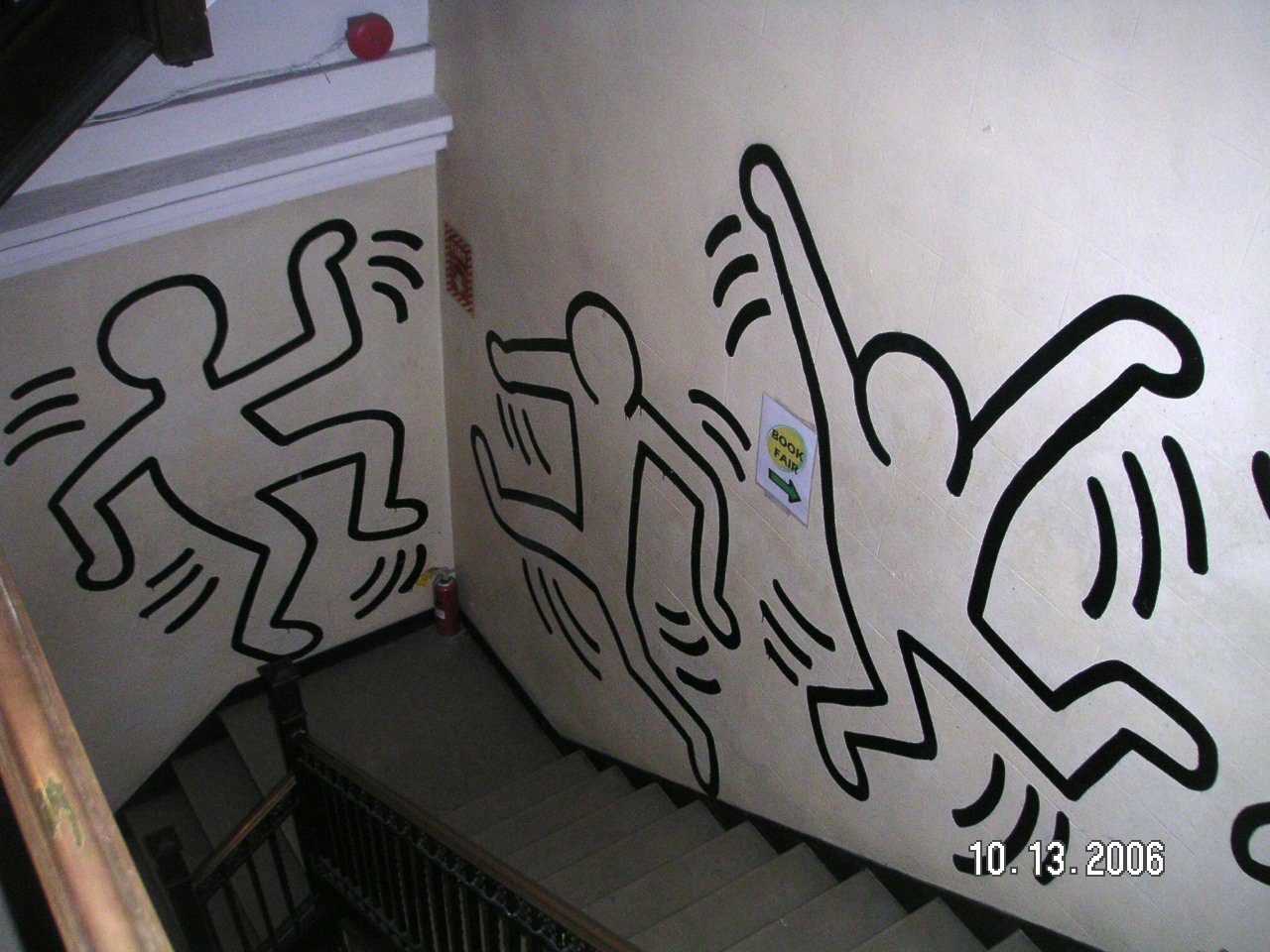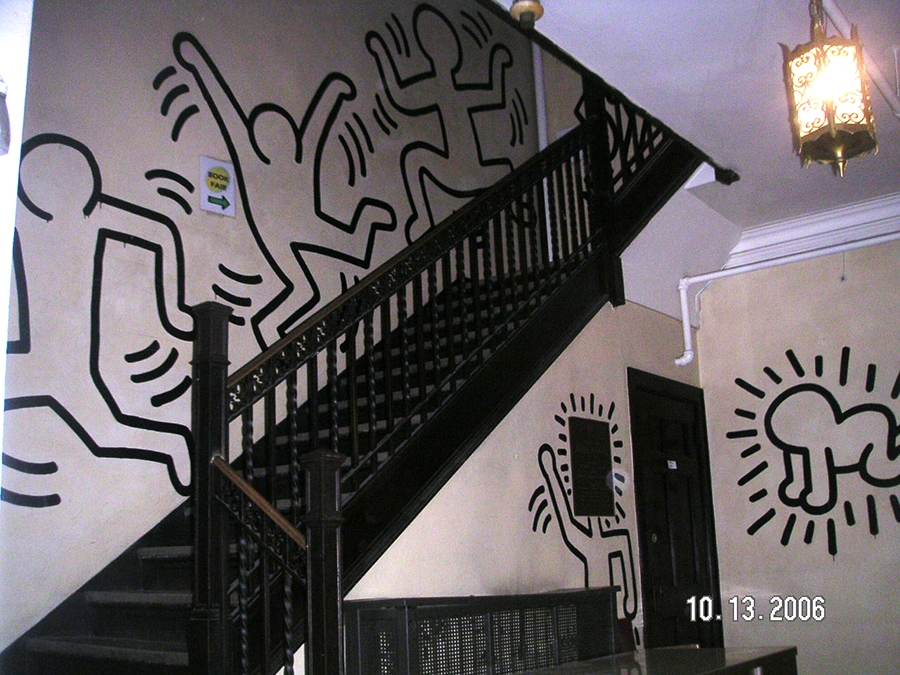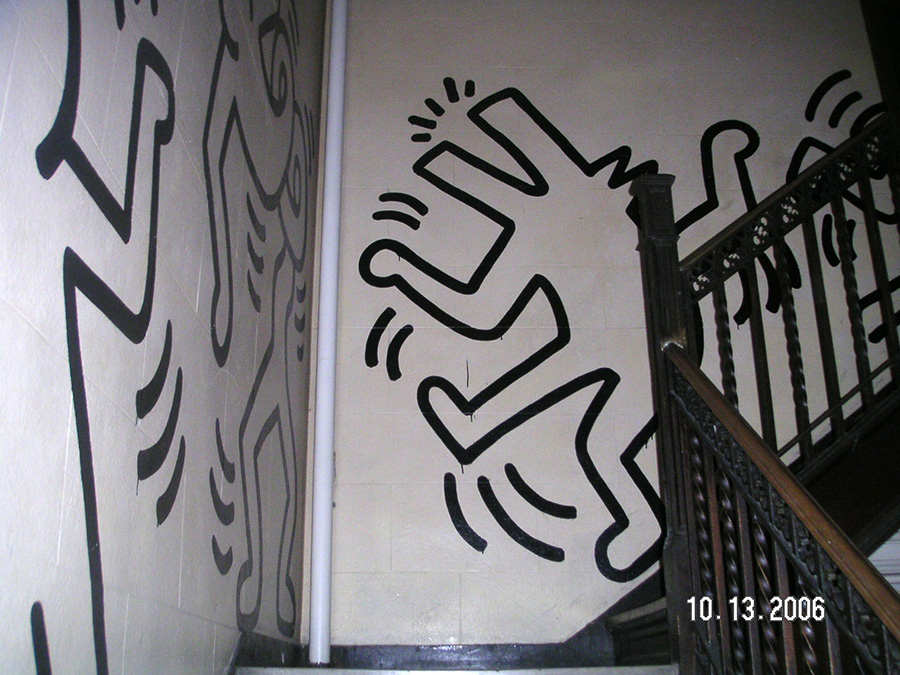I've mentioned often how the Larry Evans maze books influenced me as a kid. His first two books were published in 1976 and 1977. I was 10-years old. The introduction said to not solve the puzzles with pen or pencil, so I was able to run the mazes over and over again. I would practice drawing my own mazes. When learning perspective, I would attempt rectangular tube mazes similar to the works in his books. Hose mazes, landscape mazes- I have been drawing mazes ever since.
My original Evans books were lost, probably to my younger siblings. Recently, as I was finishing my first book for Chronicle, I thought it might be fun to see those early books again. Once I shipped my final work, I hit eBay to see if I could find those books from my childhood.























